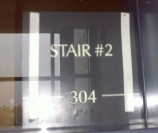Locks and locksmithing books
The Complete Book of Locks and Locksmithing
by Bill Phillips
McGraw-Hill, 2005, 588 pages

 ocks are not as simple as people think. Many
subtle features distinguish good locks from bad ones. Most
people don't realize, for example, that a lockset with master
keys is inherently less secure than one without them because
the pin arrangement has to be changed to accommodate the possibility
of master keys. This book will tell you why many of the cheap door
locks found in hardware stores actually provide minimal security.
(The strike plates in particular are nothing more than a thin piece
of sheet metal. Whenever I move to a new place, I always make my own
strike plates from 1/4-inch steel.)
It also describes the various types of physical locks and methods for
selecting, installing, repairing, and opening them, without
the key when necessary. Of course, picking locks is not always
as easy as it looks (or so I've heard). So there is also a
section on drilling locks.
ocks are not as simple as people think. Many
subtle features distinguish good locks from bad ones. Most
people don't realize, for example, that a lockset with master
keys is inherently less secure than one without them because
the pin arrangement has to be changed to accommodate the possibility
of master keys. This book will tell you why many of the cheap door
locks found in hardware stores actually provide minimal security.
(The strike plates in particular are nothing more than a thin piece
of sheet metal. Whenever I move to a new place, I always make my own
strike plates from 1/4-inch steel.)
It also describes the various types of physical locks and methods for
selecting, installing, repairing, and opening them, without
the key when necessary. Of course, picking locks is not always
as easy as it looks (or so I've heard). So there is also a
section on drilling locks.
The writing quality is generally good and the illustrations are clear. Oriented mainly toward beginning and intermediate locksmiths dealing with conventional mechanical locks. The section on electrical locks mainly covers the familiar "buzzer" type access control systems. Anyone concerned about their own security or the security of their stuff should know the information in this book. Conveniently, the author also covers handcuffs and prison locks, which will be useful when you become over-enthusiastic about your new hobby.
October 29, 2005
Electronic Access Control
by Thomas L. Norman
BH, 2012, 423 pages

 or most of us, electronic access control is just another obstacle that
the 'haves' have created to keep the 'have-nots' away from their stuff.
Those of us in the middle are the ones who pay the price in terms of clumsy
building access and security systems designed to make sure you're
the one who gets incinerated in the event of a fire.
So why read this book? Simple: know your enemy.
or most of us, electronic access control is just another obstacle that
the 'haves' have created to keep the 'have-nots' away from their stuff.
Those of us in the middle are the ones who pay the price in terms of clumsy
building access and security systems designed to make sure you're
the one who gets incinerated in the event of a fire.
So why read this book? Simple: know your enemy.
I've seen them all. Magnetic locks with the mechanism on the outside. E-locks that froze up solid when there was a power loss (and sometimes had to be "encouraged" to open under normal conditions). Office buildings that required a key to exit, but had no barriers to entering. Exit sensors that required the occupant to perform a rain dance before they would activate. "Emergency exit" doors that appeared to be welded shut. These are the so-called "path of egress" doors—egress, that is, to the afterlife. The geniuses at the top who spend their days thinking up ways to achieve bankruptcy thought they were wonderful. The ones who actually do productive work, not so much. In many cases, the employees eventually broke the door trying to make it work.
 Braille Fail
Braille Fail
But that's nothing compared to the other things people do. The best one was the time they installed a warning sign with Braille markings indicating "Stair #2" behind a glass wall, with the bumps facing the glass (see photo at left). I guess it just looked nicer that way. The poor blind person would have to find out about the stairs the hard way. We had another door that would unlock automatically when you got close to it, but the difference in air pressure between the rooms was so great that it would fly open and slam into your face if you weren't careful.
In this book, Norman emphasizes that electronic access control is just one component of a secure system. He mentions that it's now a violation of the fire code (NFPA 101) to build a building that creates the possibility of people getting trapped inside. His style is part consultant, part advertisement of his company's knowledge. Each chapter ends with a summary and a brief quiz. The writing style is good, and sometimes even witty, but there's very little technical detail. This book is basically an executive summary of building security with sufficient detail for a building manager or occupant, but not enough for an architect or engineer. Other than a little about cabling, there's no information on how to design, install, or defeat electronic locks. Is this book worth the fifty bucks? Maybe, if you're in the construction industry, or if you got suckered into being on the design committee for the next building. Otherwise, wait for the movie.
jan 16, 2012
